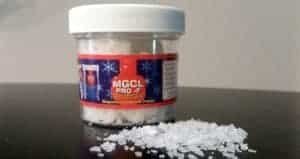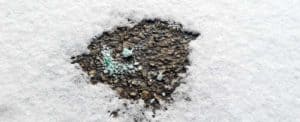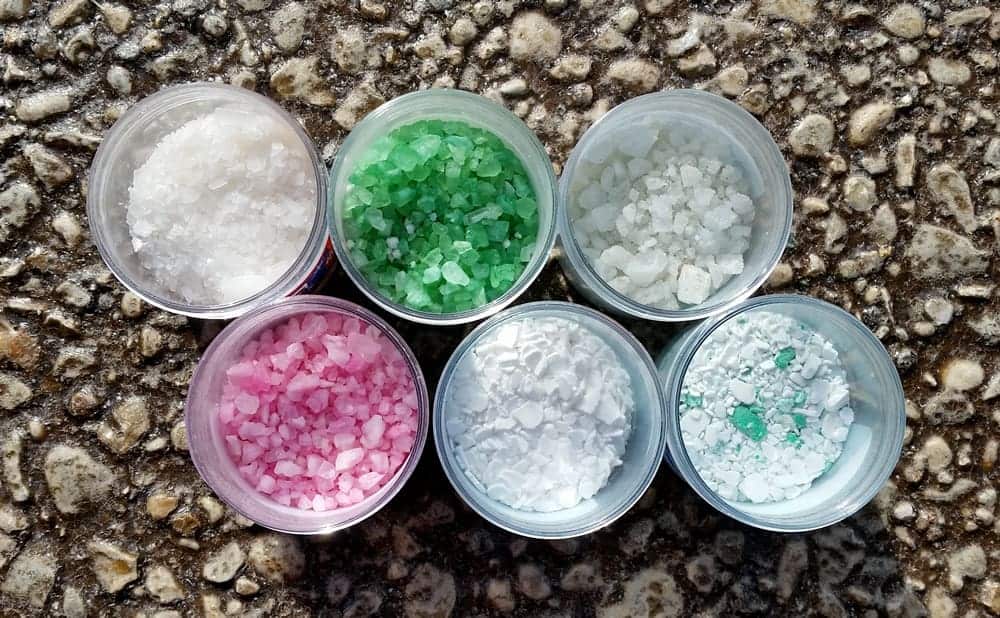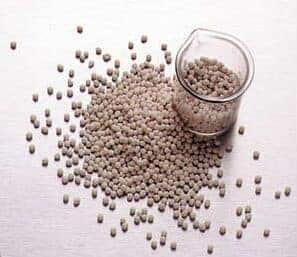There are a lot of blog posts out there that tell you they have the “silver bullet” deicer that will melt snow and ice at low temperatures while at the same time be healthy for the environment. Sorry to tell you, there are no perfect eco-friendly deicers, BUT there are better choices you can make.
There is No Perfect Eco-Friendly Deicer
First off, every single type of deicer currently on the market in large enough quantities will negatively impact the environment in one way or another. If you want to be eco-friendly with your deicer, your number one priority should be not to over-salt. Apply only what you need in order to keep people safe. All deicers are eco-friendly in small quantities and bad in large concentrations.
Beyond the environmental impact, all deicers have the potential to corrode our roads (more so with the chloride-based products and not so much with the carbohydrate deicers) and the deicers also don’t all work the same in very cold temperatures (sorry, but nothing beats out Calcium Chloride for melting ice in frigid weather).
There are three basic types of deicers out there, and each type has its own strengths and weaknesses. The three categories we will cover are chloride-based deicers, acetate-based deicers, and carbohydrate-based deicers.
Before we cover those, we should stress again that the best way to protect the environment is to not over-salt. By reducing the amount of salt, you reduce how much of the deicer gets into our soil and into our waterways. You want to put down just enough deicer (or preventative anti-icing agent) to keep people safe without an ounce more.
 Chloride-Based Deicers
Chloride-Based Deicers
Chloride-based deicers are the most common deicers used in the United States and throughout the world with rock salt leading the way. Rock salt is the same thing as table salt, only in larger grains. Calcium chloride and magnesium chloride are also popular chloride-based deicers.
All chloride-based products are highly corrosive to metals and moderately corrosive to concrete. More importantly, in larger concentrations, chloride-based deicers are harmful to plants, moderately harmful to soil and waterways, yet they have little impact on air quality.
In other words, if you put enough salt on your plants, they are going to die. You can think of it this way. You can put a pinch of salt next to one of your plants and you won’t see a change to the health of your plant. If you add five pounds of salt around a small potted plant, expect something bad to happen. A little salt in the river won’t hurt anything, but start dumping tons of salt in the water and salinity starts adding up which can be toxic for freshwater aquatic life.
We can say that calcium chloride and magnesium chloride are less harmful to the environment than rock salt because they can help the soil in lower doses by improving soil structure plus you need less of these two than rock salt to break up the ice. You will even find calcium chloride in some of your food used as a preservative and flavor enhancer, which shows again, in moderation, it really is a “friendly” deicer”
These two deicers are definitely more “environmentally friendly” than rock salt to your soil and they introduce less chlorine into the environment because it takes less volume of either of these two deicers to do the same work, allowing you to use less deicing product overall.
Generally, most people do not spread calcium chloride or magnesium chloride in 100% pure form because the cost is significantly higher compared to rock salt. Instead, most people will use them in blends with rock salt allowing for maximum impact while keeping costs reasonable.
Acetate-Based Deicers
Acetate-based deicers do not poison the ground and waterways with chlorine and in moderate amounts, they can act as fertilizer. The key point is “moderate amounts.” Deicers like Calcium Magnesium Acetate (one of our favorites), Potassium Acetate, and Sodium Acetate are moderately corrosive, don’t hurt soil or the air when used in moderation, but in larger quantities, they can be devastating to plants and aquatic life.
What happens is they create osmotic stress (water is pulled out of the cells) when found in larger concentrations in plants and they set off microscopic organism growth which steals oxygen and other resources from affected plant and aquatic life. This second issue is similar to what happens when too much farm runoff gets into streams where you see a lot of algae growth, yet the fish may be oxygen-starved.
Carbohydrate-Based Deicers
Carbohydrate-based deicers are friendlier to metals and concrete but they do not have a whole lot of power to melt ice in cold temperatures. Carbohydrate-based deicers are made from beets or other fruits or vegetables and can be pricey for how little work they actually do to remove ice. Because these deicers have not yet shown a lot of value in cost versus the benefit, most people just avoid them altogether (which is also why we do not stock them). You are more likely to see these types of deicers as part of a blend than by themselves if you see them in the stores.
Carbohydrate-based deicers have a similar effect on plants and aquatic life as acetate-based deicers. In larger concentrations, the sugars are going to spur the growth of micro-organisms which steal necessary resources for growth from plant and aquatic life. If you have ever mixed compost into your soil without having let the compost “cook thoroughly” or break down all the way, you may have seen plants you put in that soil struggle or even die. These carbohydrate deicers can have the same effect in larger concentrations. While bacteria break down the deicer, they use up nitrogen and oxygen, and if there is too much carb-based deicer in an area, plant or aquatic life can be killed.

You Wonder “What Eco-Friendly Deicer Should I Choose?”
There is no one right answer since there are pros and cons to every product. Again, the first step in protecting our environment is generally to just use less deicer. Apply only as much deicer as is necessary for safety. If you can, one option is to prevent traffic from certain areas, so you don’t have to apply deicer in those spots at all. Another option is to use a deicer that has a bright color to it, so you will be able to accurately see how much salt you have actually spread.
Is not using deicer at all an option? Maybe…but sending someone to the hospital by helicopter because of a serious slip and fall accident is not “environmentally friendly” either. Make sure you show the people in your life you care about them enough to keep their walkways safe…or move south so it’s a non-issue for you.
In the end, the deicer for you will be what fits your personal choice and yet still removes the ice. One of our personal favorites is Calcium Magnesium Acetate for when temperatures are above 15 degrees. It is one of the friendliest deicing products available that is commonly found in the market.
When you have colder weather, then Calcium Chloride or a Calcium Chloride blend like Hot Melt are your best options because they can work in very cold temperatures yet it takes a lot less to get the job done (like 2-7 times less depending on the product you are comparing it to).


